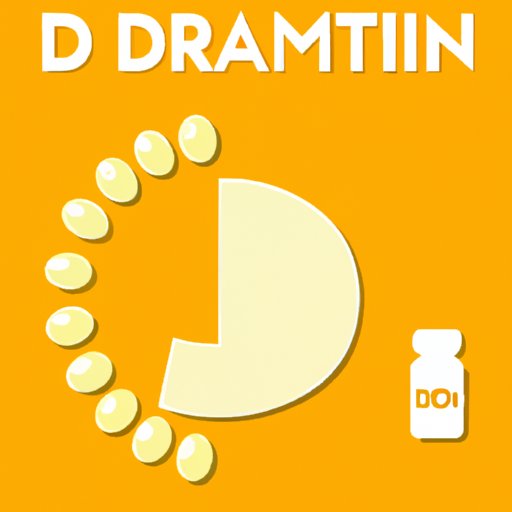
What Happens When Vitamin D is Low?
Vitamin D is an essential nutrient that plays a crucial role in many aspects of our health. It’s necessary for the proper functioning of our immune system, and it helps us absorb calcium, which is essential for healthy bones. However, many people don’t get enough vitamin D, and this can have serious consequences for their health. In this article, we’ll discuss what happens when vitamin D levels are low, and why it’s so important to maintain healthy levels of this crucial nutrient.
The Symptoms and Risks of Vitamin D Deficiency
When vitamin D levels are low, several symptoms may occur. These include bone pain, muscle weakness, fatigue, depression, and more. Over time, low vitamin D levels can increase the risk of several health problems, including osteoporosis, heart disease, and diabetes. Vitamin D is essential for calcium absorption, and when levels are low, bones can become brittle and weak, leading to an increased risk of fractures.
The Importance of Vitamin D for the Body
Vitamin D is a crucial nutrient that the body needs to function properly. One of its main functions is to help the body absorb calcium, which is essential for building and maintaining strong bones. Without enough vitamin D, bones can become brittle and weak over time, leading to an increased risk of fractures and other bone-related problems.
Vitamin D also plays a role in the proper functioning of the immune system, helping the body fight off infections and illnesses. Additionally, low vitamin D levels have been linked to an increased risk of depression and other mental health problems.
Risk Factors for Vitamin D Deficiency
There are several lifestyle factors that can contribute to low vitamin D levels. People who spend most of their time indoors or who live in areas with limited sunlight may be at an increased risk of vitamin D deficiency. Additionally, people who follow strict vegetarian or vegan diets may not get enough vitamin D from their diet alone.
Medical conditions and certain medications can also interfere with vitamin D absorption. People with gastrointestinal conditions like Crohn’s disease or celiac disease may have trouble absorbing vitamin D from their food. Certain medications, including some cholesterol-lowering drugs and steroids, can also interfere with vitamin D absorption.
Some populations are also at a higher risk of vitamin D deficiency. The elderly, people with darker skin, and people with obesity are all more likely to have low vitamin D levels.
Diagnosis and Treatment of Vitamin D Deficiency
Vitamin D deficiency is typically identified through a blood test. Doctors will measure the amount of vitamin D in the blood, and if levels are low, they may recommend treatment. Treatment for vitamin D deficiency typically involves taking vitamin D supplements. In most cases, over-the-counter supplements are sufficient to raise vitamin D levels to a healthy range.
The Benefits of Maintaining Healthy Vitamin D Levels
Maintaining healthy vitamin D levels can have several positive benefits for overall health and wellbeing. Strong bones are one of the most well-known benefits of vitamin D, but it has several other benefits as well. Vitamin D has been shown to boost immune function, protect against some types of cancer, and improve mental health.
It’s essential to get vitamin D from the right sources and maintain healthy levels of the nutrient. Spending time outside, eating a diet rich in vitamin D, and taking supplements can all help ensure that vitamin D levels stay within a healthy range.
Conclusion
Vitamin D is a crucial nutrient that plays a vital role in many aspects of our health. Low vitamin D levels can lead to several serious health problems, including osteoporosis, heart disease, and diabetes. Fortunately, vitamin D levels can be easily tested, and there are several treatment options available for those who have low levels. Taking steps to maintain healthy vitamin D levels, such as spending time outside and eating a balanced diet, can help promote optimal health and wellbeing.




